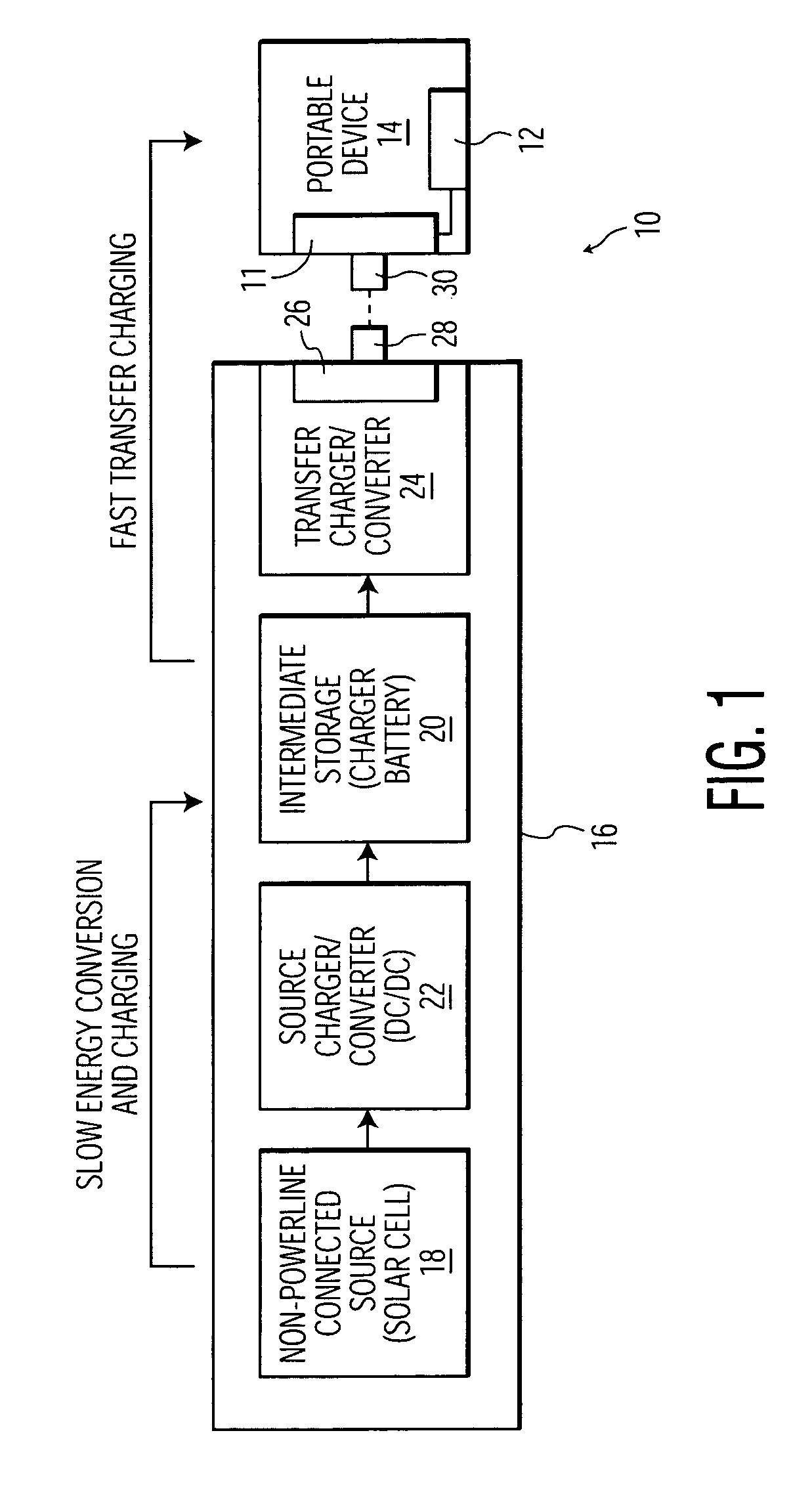Wireless battery charging
- Summary
- Abstract
- Description
- Claims
- Application Information
AI Technical Summary
Benefits of technology
Problems solved by technology
Method used
Image
Examples
Embodiment Construction
[0013]FIG. 1 is a schematic representation of a first exemplary embodiment of an apparatus 10, according to my invention, for charging a battery 12 in a portable device 14. The apparatus 10 includes a wireless charger 16 having a non-power-line-connected source of electrical charge, in the form of a solar cell 18 for converting light energy impinging on the solar cell 18 into an electrical charge, and an intermediate storage device, in the form of a charger battery 20 for storing the electrical charge. The wireless charger 16 also includes a source charger / converter, in the form of a direct-current to direct-current (DC / DC) converter 22, for charging the charger battery 20 with the electrical charge received from the solar cell 18. The wireless charger 16 further includes a transfer charger / converter 24, having a transfer circuit 26 and a charger connector 28 adapted to mate with a mating electrical connector 30 on the portable device 14, for delivering the stored electrical charge ...
PUM
 Login to View More
Login to View More Abstract
Description
Claims
Application Information
 Login to View More
Login to View More - R&D
- Intellectual Property
- Life Sciences
- Materials
- Tech Scout
- Unparalleled Data Quality
- Higher Quality Content
- 60% Fewer Hallucinations
Browse by: Latest US Patents, China's latest patents, Technical Efficacy Thesaurus, Application Domain, Technology Topic, Popular Technical Reports.
© 2025 PatSnap. All rights reserved.Legal|Privacy policy|Modern Slavery Act Transparency Statement|Sitemap|About US| Contact US: help@patsnap.com



